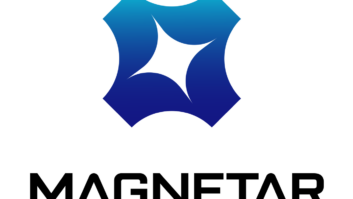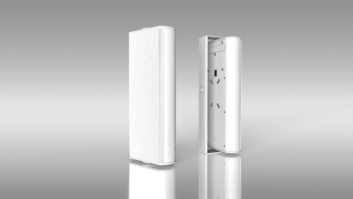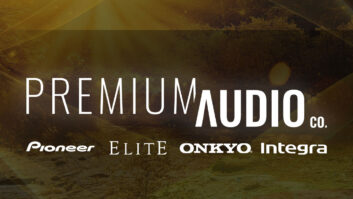Suppliers are turning to CAT-5, CAT-5 Ethernet networks, 1394b and wireless 802.11b to distribute content throughout the house.
During the CEDIA Expo, Denon will host a technology demonstration of a prototype Ethernet-based A/V network (see story on this page), while Onkyo and NetStreams plan to demonstrate Ethernet-based audio networking.
Ethernet will also be the medium by which startup Kaleidescape will deliver video throughout the house from an on-demand movie server (see story below).
In wireless 802.11b developments, Fosgate Audionics will demonstrate a device that connects a PC to a home theater system, and Yamaha plans to exhibit its wireless MusicCAST client-server audio system. The system was unveiled at CES in January and is now shipping.
To distribute audio or video over non-Ethernet CAT-5 cable, Atlantic Technology and GE Interlogix will unveil their first CAT-5-based distributed-audio systems, and AudioControl will unveil a system to transmit HDTV over CAT-5.
Here’s what installers will find:
Atlantic Technology: Using SystemLine technology licensed from European multiroom-audio supplier QED Audio Products, Atlantic plans to unveil its first multiroom audio distribution system to use CAT5/6 cabling. It features active loudspeaker. Other details were unavailable.
AudioControl: The company already markets audio and video transmitters and receivers that deliver analog audio, composite video, and S-video over CAT-5 throughout a house. The new BVD-20 and BVR-20, due September, will distribute HDTV signals throughout the house in component-video form. Component-video signals in 480i, 480p and high-definition 720p form can be transmitted up to 1,000 feet, and 1080i HD signals can be sent up to 300 feet, the company said. Video bandwidth is almost 300MHz.
With the devices, installers can mount one or more HD satellite receivers or other HD set-top boxes in a utility room to distribute the signals to multiple HDTV screens in different rooms.
GE Interlogix: Late fall is the target date to ship a CAT-5e distributed-audio solution for the company’s Smart ConnectionCenter structured-wiring system. The solution delivers four-source, four-zone audio distribution via CAT-5e cables to in-wall volume controls incorporating an audio amplifier to drive in-wall or in-ceiling speakers. To control sources selection and preamp functions, each volume control is equipped with IR receiver to deliver commands from a handheld remote.
Fosgate Audionics: The company plans first-quarter shipments of the Streamer FAP S1, a hard-drive device that streams audio and video via wireless 802.11b from a PC to a connected home theater system. Alternately, consumers can download music files wirelessly from the PC for storage on the device’s hard drive so they won’t have to turn on their PC every time they want to listen to music or view videos.
It will be compatible with most “significant” audio and video codecs, including MPEG/2 MP3/Pro, WAV, OGG and WMA, the company said.
The FAP S1 features premium internal A/Ds. Digital and analog audio outputs and composite and S-Video outputs are used for connections to home theater systems.
The expected retail is about $1,000.
NetStreams: The company plans fourth-quarter shipments of an Ethernet-based distributed audio system shown in prototype form at last year’s show.
Called DigiLinX, the multizone system uses Ethernet cabling to distribute multiple audio streams without degrading sound quality over long distances, said sales and marketing VP Buzz Goddard.
Another advantage of the Ethernet system is its in-wall keypads’ ability to display song titles, artist names and other metadata for songs streamed from a hard-drive music server or from optional XM satellite radio cards, he said. Displaying such information on keypads or touchscreens in traditional distributed-audio systems, he contended, would require a system costing at least $30,000, excluding source units and installation. In contrast, DigiLinX delivers that capability for about $10,000, excluding source units and installation, in a six-zone configuration, Goddard contended.
The system’s Ethernet bandwidth and hardware-expansion capabilities allow for “virtually an unlimited number of zones and sources” limited only by the capabilities of other companies’ multizone music servers and the number of other source components installed, he added. That expandability can’t be replicated in a traditional distributed-audio system, he said.
To control connected devices such as CD megachangers, the system’s central component, the AudioLinX controller, stores IR commands.
The system also consists of IP-addressable digital amps (rated at 2×20 watts into 8 and 4 ohms) mounted on or next to in-wall and in-ceiling speakers, and in-wall color-LCD keypads. The amp module also features memory buffer and DA converters.
The amps and keypads run to the controller via a siamese cable consisting of CAT-5e for data and two pairs of speaker wire that carry 28 volts to power amps and keypads.
Last year, the company delivered low-voltage over CAT-5 to power the amps but decided that CAT-5’s tiny strands didn’t deliver enough voltage, Goddard said.
Onkyo: The brand will add a second Onkyo-branded receiver equipped with Net-Tune Ethernet-network technology. The Onkyo receivers connect via Ethernet to a PC loaded with Net-Tune software to stream music files from the PC and from Internet radio stations.
The TX-NR901, at a suggested $1,000, joins the existing $1,500 TX-NR900 and the NC-500 Net-Tune client, which features AM/FM tuner, amplifier, no speakers and built-in reception of Internet radio stations via a broadband connection.
Sister brand Integra also offers Net-Tune receivers, a preamp/processor, and a client, but those connect to a central Integra hard-drive-based 12-zone music server.
1394 Trade Association: The promoter of the short-range 1394a and long-range 1394b specs will use both technologies in a demonstration that will include transmission of an HD signal across 80 meters from a JVC D-VHS recorder. The signal will travel through hybrid US Tec 1394a/b wallplates and US Tec’s structured-wiring cabinet to a Mitusbishi HDTV. The demo will also include music distribution via a Pioneer 1394-equipped receiver and universal DVD player, plus file and broadband-modem sharing among VAIO and Hewlett-Packard Media Center PCs.
The US Tec a/b products are currently available, as are more than a dozen 1394a-equipped home devices from such companies as Mitsubishi, Panasonic, Sanyo, Sony, Thomson, Pioneer and Samsung, the association said.













